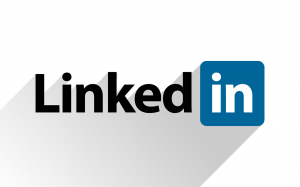Programmatic ads now account for a majority of display ads in the US, and columnist Victor Wong believes that advertisers must craft their creative to win in this environment.

Advertisers and publishers have no choice but to go “LEAN” — lightweight, encrypted, AdChoices-supported and non-invasive.
Why? There’s the recent founding of the Coalition for Better Ads and the updates to the IAB LEAN standards. There’s ad blocking and the fact that people don’t want to use their mobile data for advertisements. There’s Google announcing it will begin to enforce new policies, starting in January 2017, in which publishers using ad formats that interfere with the user experience, such as pop-ups and standalone interstitials, will be penalized with lower Google rankings. Plus, Google charges advertisers more for serving “heavy” ads.
Speeding up load time doesn’t just improve the ad experience for consumers — it dramatically affects ad viewability, according to new research from Thunder, a programmatic creative platform (disclosure: my company).
The data show that the lightest ads have the highest viewability, at 52 percent to 70 percent. In ads under 50KB, there is a 3 percent drop in view rates for each 10KB after the initial 10KB. That is followed by a 0.5 to 1 percent drop in view rate per extra 10KB beyond that. Average viewability bottoms out at around 25 percent in the 150–200KB range — the IAB recommended maximum.
All of this has created an emphasis on creating consumer-friendly ads with lighter file load sizes and fewer server calls. Programmatic advertising now accounts for more than two-thirds of all digital display ad spending in the US, but since it calls for multiple ad versions, creative best practices aren’t as widely known or easily executed.
Here are five tips for creating effective LEAN ads, particularly for programmatic creative executions.
1. Emphasize creative relevance
Programmatic advertising requires intelligent audience segmentation and the customized creative to match. Since you can’t rely as easily on bells and whistles with LEAN ads, you need to make sure you’re serving the message that is most likely to resonate with the recipient.
Smart customization at scale takes time and talent, and it is not something most organizations are doing right just yet. But if advertisers are going to rely more on user-friendly ads with quick load times, they need a targeting strategy that includes custom creative that means something to the people who see it.
2. Optimize every image
Image compression is a standard step in building digital ads. Designers crop and save their images, then compress them. But this is a manual process, and it is sometimes overlooked in programmatic creative executions. No matter how many versions of an ad you are running, optimizing images will help keep file size down and load time and viewability up.
3. Use lightweight animation
Creating lightweight animation is a multi-step process, with designers trying a number of tactics, including trimming animation; reducing the number of frames when possible; optimizing file sizes; reducing the size of HTML, CSS and JavaScript files; and using HTML5 built-in tools and features. Programmatic advertisers must make sure they optimize every ad version to stay LEAN-compliant, just as they would in a single creative execution.
4. Have a plan for custom fonts
Most brands use a custom font or two, but they can slow down page load times since the browser has to download the font before it can begin page rendering. Web designers try a handful of tricks for getting around this, including turning text into images so they load faster. These workarounds can be time-consuming to do at scale, and they are not built into dynamic creative solutions.
Advertisers must consider the impact of custom fonts in their programmatic advertising and build processes for using them wisely, whether via an automated solution or in-house resources.
5. Double down on testing
In this world of LEAN, there is a greater emphasis on testing. Since you can’t get away with making huge, flashy ads, you have to rely more on the power of the message. Adopt the agile marketing mantra of “test and learn” — monitor the performance of every ad version closely, and refine accordingly.
LEAN ads are more important than ever, and as advertisers invest more in programmatic solutions, they have to devise an approach for creative optimization at scale. Optimization techniques are more challenging to execute when you are running many ad variants, but they are no less important. The list of consequences has become too long to ignore — programmatic ads must be LEAN.
Some opinions expressed in this article may be those of a guest author and not necessarily Marketing Land. Staff authors are listed here.
Marketing Land – Internet Marketing News, Strategies & Tips
(48)
Report Post






